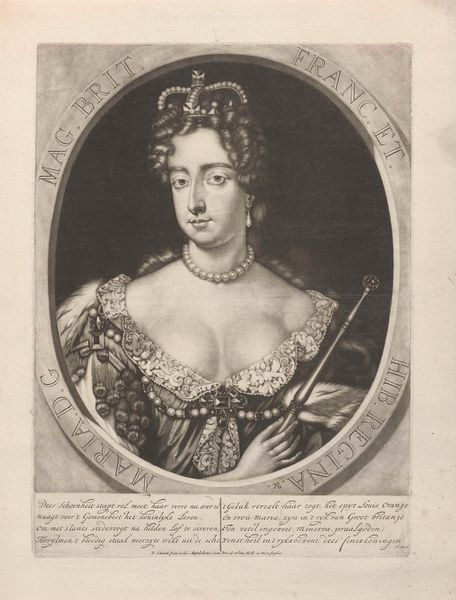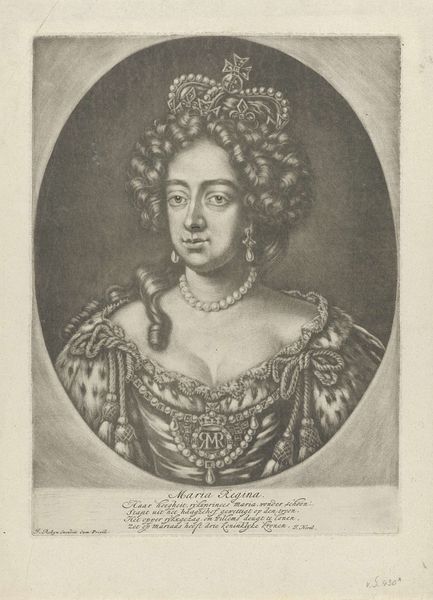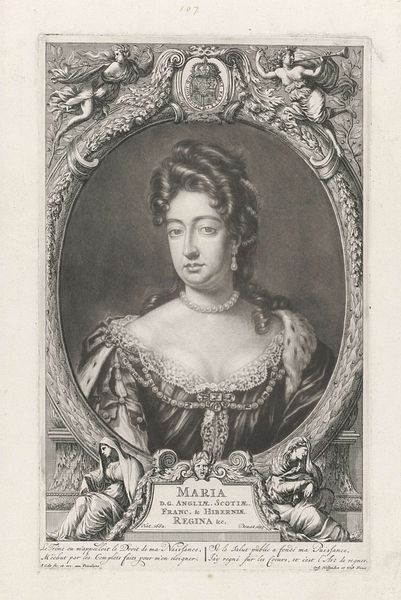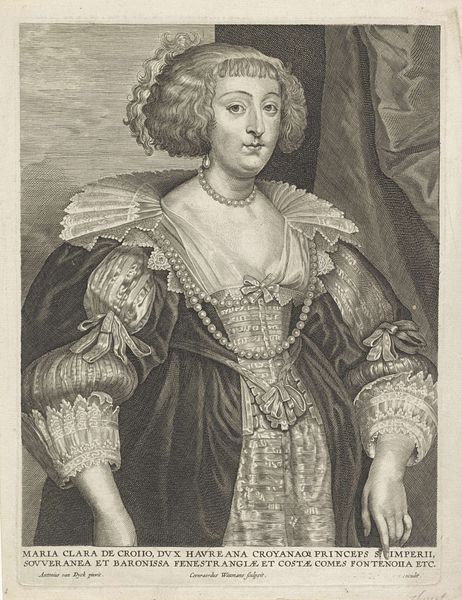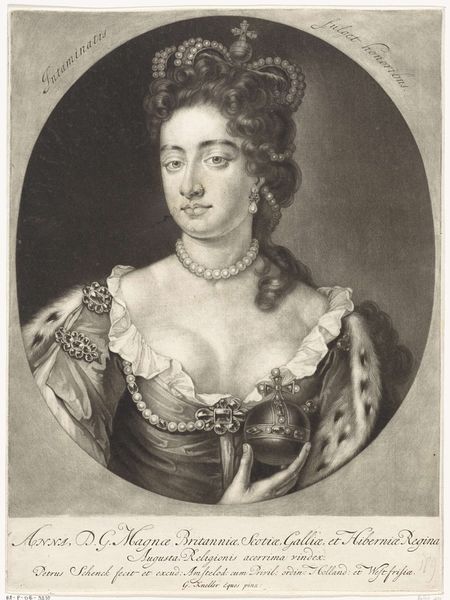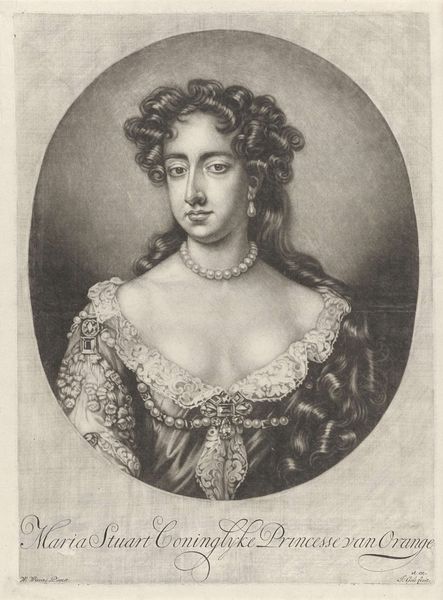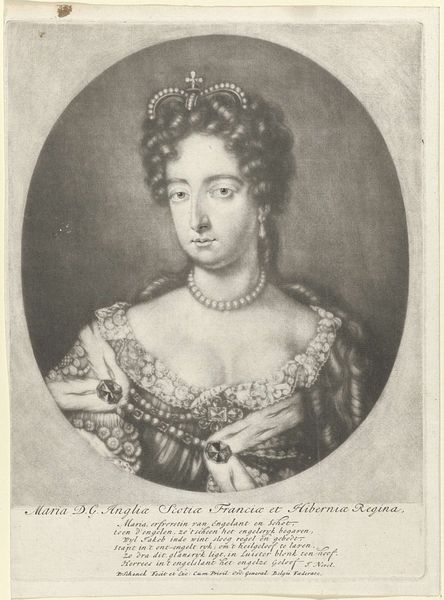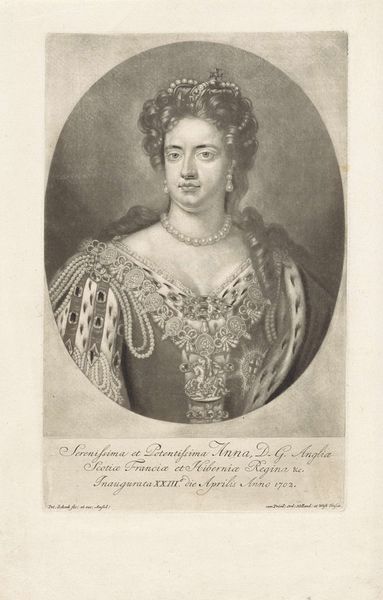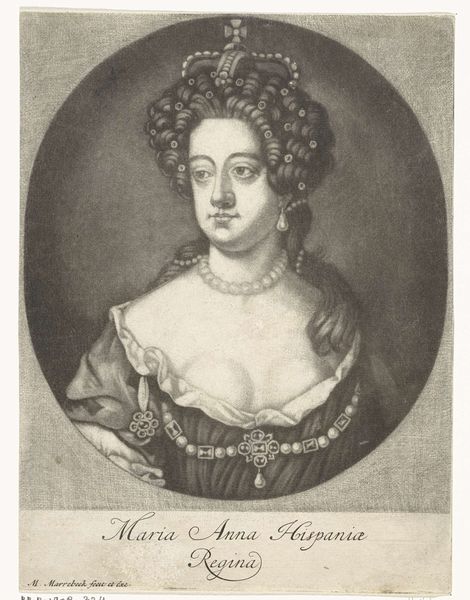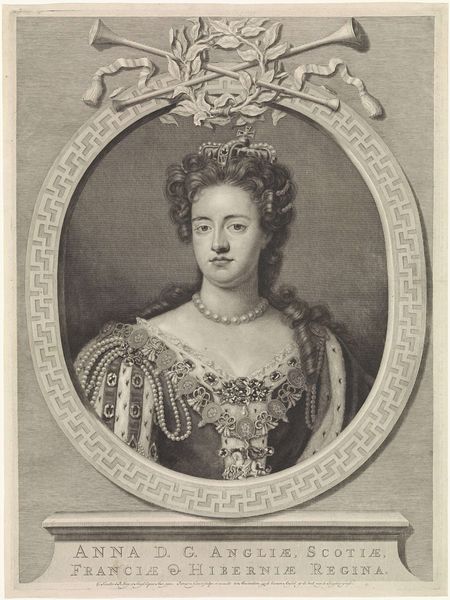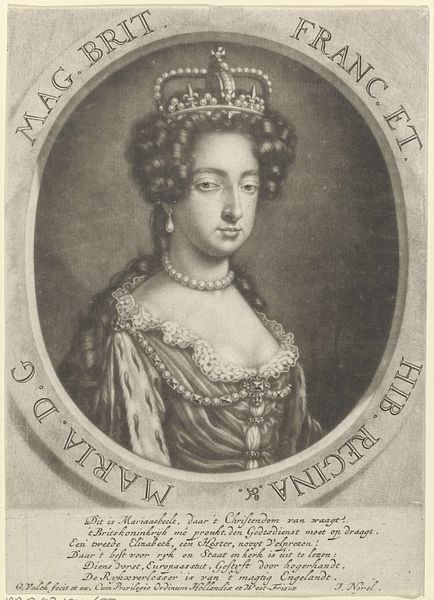
engraving
#
portrait
#
baroque
#
history-painting
#
engraving
Dimensions: height 353 mm, width 255 mm
Copyright: Rijks Museum: Open Domain
Editor: Here we have a portrait of Maria II Stuart, likely made between 1688 and 1726 by Gerard Valck, using the engraving technique. The piece projects a real sense of Baroque grandeur, doesn’t it? How do you see its construction working? Curator: Yes, the Baroque aesthetic is quite pronounced. Note how the circular composition contains the subject, but her gaze almost breaks that boundary, engaging the viewer. Valck also skillfully manipulates light and shadow to give depth and volume. Observe, for example, the rendering of the queen's voluminous hair; the play of light across those curls creates an almost sculptural effect. How does that contrast with the treatment of the crown itself? Editor: Good point. The crown, while highly detailed, appears flatter compared to the hair. Does that contrast contribute to the overall visual interest, do you think? Curator: Precisely. That very contrast draws our attention to the crown’s semiotic weight: it’s not just an adornment but a symbol of power, rendered in a more iconic, less naturalistic way. Consider the relationship between that inscribed text in the roundel. How do the fonts contribute to this interplay? Editor: I didn't notice the interplay between those features initially! So, by deconstructing its elements – the composition, light, textures and its symbology – we start to get a clear sense of this portrait's meaning, and impact? Curator: Exactly. Through close analysis, the artwork reveals the strategies that were deployed. Editor: Thank you, I see much more now!
Comments
No comments
Be the first to comment and join the conversation on the ultimate creative platform.
